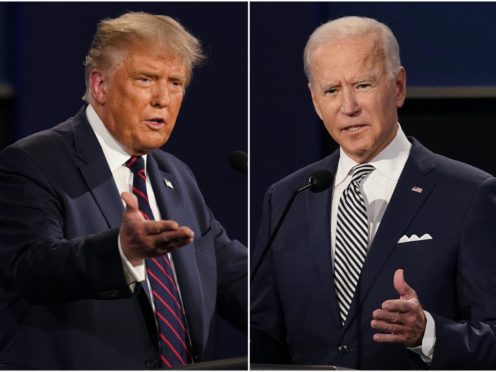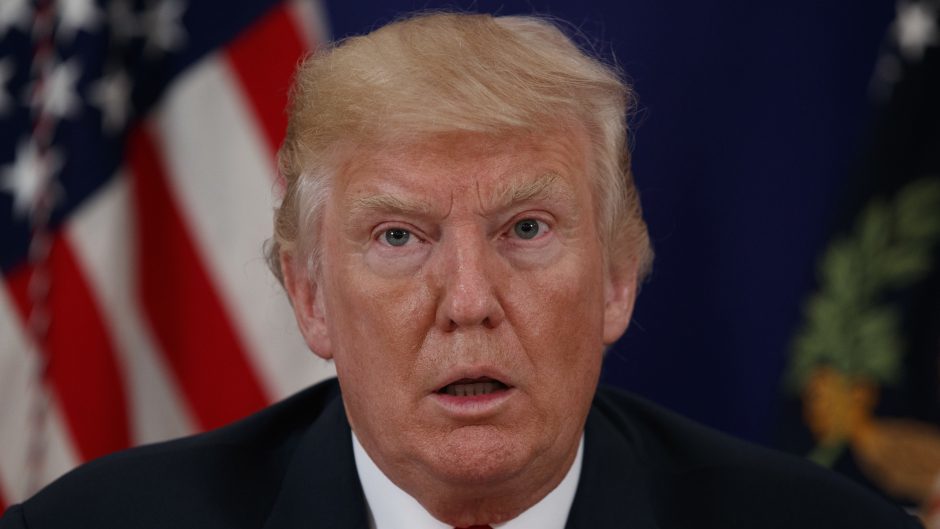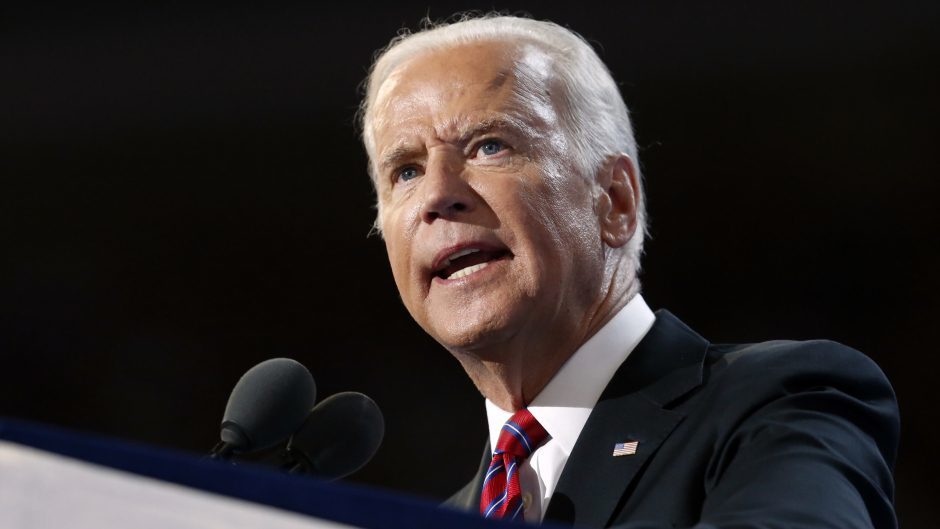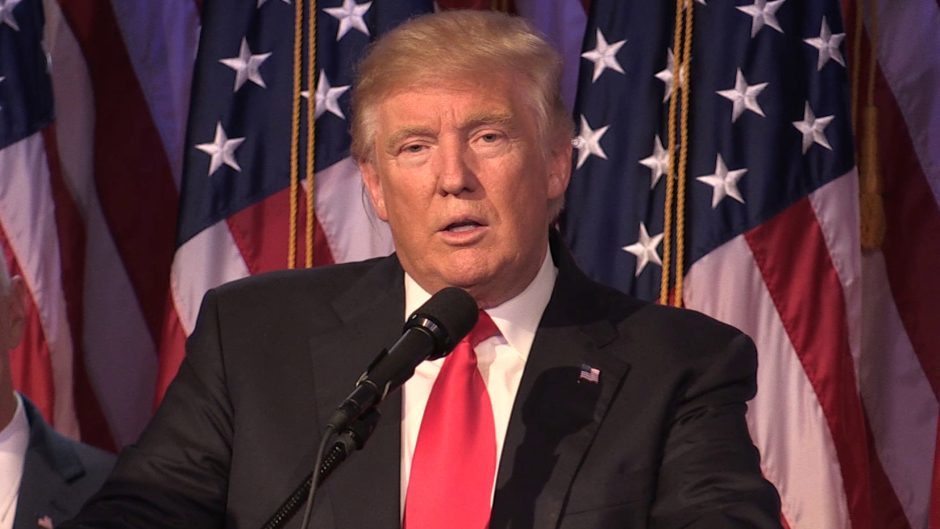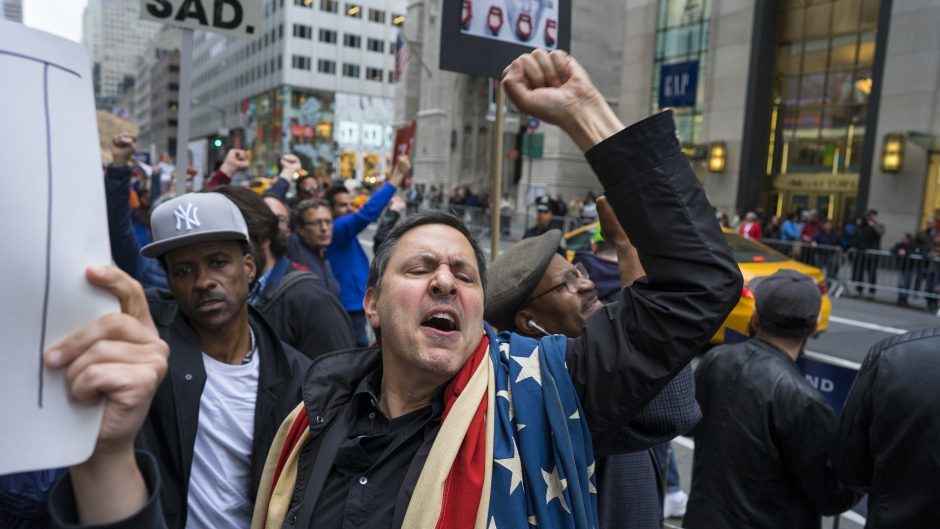Americans are set to vote in one of the most divisive and controversial presidential elections in decades, pitting incumbent Donald Trump against former vice-president Joe Biden.
The polls opened from around 10am on Tuesday (UK time), when a record-shattering 100 million voters were believed to have already cast their vote. The final results may be slow in coming through but we expect the first tranche early on Wednesday morning.
Complexity around the large number of postal ballots, in the wake of the coronavirus pandemic, and a potential legal fight over the results mean there is a chance it could be days or even weeks until the victor is officially confirmed.

National polls give Democrat Mr Biden a strong lead – one he has commanded throughout a remarkably stable race that has seen the landscape barely shift since the campaigns got under way after party conventions in August.
But it has been a tumultuous year rocked by a global pandemic and Mr Trump could still snatch victory with a series of state-level successes, even if he loses the popular vote, as he did in 2016.
Throughout all the twists and turns of this historic election, you can follow live coverage and analysis throughout the night on The Courier, The Press and Journal and Evening Express websites.
How does the voting work?
US presidential elections are decided through electoral college votes won by achieving success in individual states, rather than a national popular vote.
Each state gets a certain number of votes partly based on its population and there are a total of 538 up for grabs, with 270 the magic number to secure a victory.
Vote tallies will be announced throughout the night and when enough have been counted from across a state to determine an unbeatable lead, news organisations will call a winning presidential candidate for that state.
In reality, those unofficial results may only be certified days and weeks later.
What do the polls say?
National polls can be a good guide of how popular a candidate is across the country but expecting them to predict the next president is an activity fraught with danger.
Hillary Clinton famously led in the polls in 2016 and pipped Mr Trump to almost three million more votes but it wasn’t enough to secure her the presidency.
Mr Biden appears to be around 10 points ahead based on most national polls but the latest data suggest it is still possible – if not extremely difficult – for Mr Trump to remain in the White House.
According to CNN, his best path to stop his Democrat rival may be a larger than average polling error in Arizona and Pennsylvania, and wins in a few other key swing states.
A New York Times/Siena College poll has Mr Biden and Mr Trump separated by just three points in Florida, while an ABC News/Washington Post poll has the race within two points – far too close to call.
If Mr Trump is able to win Florida and take North Carolina and Georgia, both of which have similar polling to the Sunshine State, then all bets could be off.
The polls have Mr Trump down by four points in Arizona and around six points in Pennsylvania but the former has a history of polling errors favouring the Republicans and the latter has been a key target for the Trump campaign.
It’s too early to tell whether any of that will play out and it’s just one possible route to Mr Trump securing what appears to be an unlikely victory.
What are the other key states to look out for?
This really is an election like no other so in some ways, all the old rules have been thrown out the window.
There is a long list of swing states this year and that is making both campaigns nervous. Pennsylvania, Michigan and Wisconsin swung the last election but Mr Trump won them by just 80,000 votes combined.
It has long been thought that whoever wins Florida wins the White House but the Democrats are also targeting Arizona, North Carolina and Georgia. The Republicans have been making moves, meanwhile, to win back Minnesota and New Hampshire.
Here is a breakdown of states, which way they are expected to lean and how many electoral votes they command:
Solid Republican: Alabama (9), Alaska (3), Arkansas (6), Idaho (4), Indiana (11), Kansas (6), Kentucky (8), Louisiana (8), Mississippi (6), Missouri (10), Montana (3), Nebraska (4), North Dakota (3), Oklahoma (7), South Carolina (9), South Dakota (3), Tennessee (11), Utah (6), West Virginia (5), Wyoming (3) (125 total).
Leans Republican: Texas (38) (38 total).
Battleground states: Arizona (11), Florida (29), Georgia (16), Iowa (6), Maine 2nd Congressional District (1), North Carolina (15), Ohio (18) (96 total).
Leans Democratic: Colorado (9), Michigan (16), Minnesota (10), Nebraska 2nd Congressional District (1), Nevada (6), New Hampshire (4), Pennsylvania (20), Wisconsin (10) (76 total).
Solid Democratic: California (55), Connecticut (7), Delaware (3), DC (3), Hawaii (4), Illinois (20), Maine (3), Maryland (10), Massachusetts (11), New Jersey (14), New Mexico (5), New York (29), Oregon (7), Rhode Island (4), Vermont (3), Virginia (13), Washington (12) (203 total).
Will there be a result on election day?
Maybe not. There are a lot of big issues at play, including the large number of battleground states and the prospect of counting delays in areas where local laws prevent officials from opening ballot boxes before November 3.
In some states, such as Pennsylvania and Michigan, election agents have predicted it may take up to three days after polling day to finish counting the ballots.
Of course, one side could win a victory so large it makes delays in individual states irrelevant but even that may not be enough to settle the issue.
Mr Trump has form for crying fraud at elections and has given his opponents no reason to think he would accept defeat in this time without a major row. Both sides have been quietly lawyering up for a fight in the courts.
Mr Trump pushed hard for the Senate to confirm Amy Coney Barrett to the Supreme Court before election day so a full nine-justice team can resolve any disputes. What the outcome of any such case would be is still very much an unknown.
Will there be civil unrest?
Business owners across the country are certainly worried and have been boarding up shop fronts as they prepare for potential unrest.
Police departments have also cancelled time off and are deploying more officers than usual to ramp up patrols.
There have already been reports ranging from people honking horns our shouting near voting sites to an incident on Friday involving a caravan of Trump supporters surrounding a bus carrying Democrat voters.
Shopping giant Walmart said last week it would temporarily remove guns and ammunition from display in thousands of its stores, citing concerns of “civil unrest”, but it has since reversed the decision.
Australia’s Department of Foreign Affairs updated its travel advisories, warning citizens against travel to the US in part due to anticipated violence.
“Take precautions to keep safe during the election season,” the department said. “Avoid areas where protests and demonstrations are occurring.”
